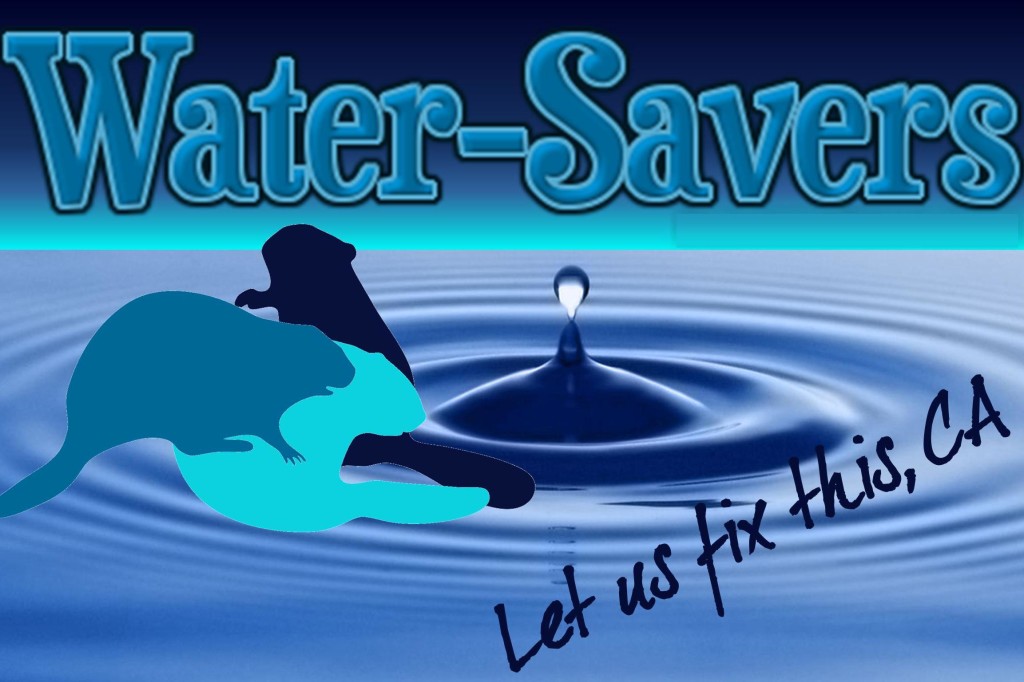If your were me you would have been reviewing beaver headlines since Bush was president and you’d be startled to see the shift. Starting slowly but becoming obvious since last year. It used to be that nine out of every dozen beaver stories was about flooding or trapping or eating something important. It was very rare to see one or two about the benefits beavers could bring if left unimpeded. Now its not uncommon to see 10 out of 12 talking about beaver benefits. When I shop for which to write about here I am, to coin an old phrase, ‘spoiled for choice’.
Beavers tapped for water management
 Beavers and humans have this in common: They both work to alter the flow of water to their own benefit. Unfortunately for both parties, their activities are sometimes at odds.
Beavers and humans have this in common: They both work to alter the flow of water to their own benefit. Unfortunately for both parties, their activities are sometimes at odds.
“Beavers are land managers like farmers,” said Brian Bangs, aquatic ecologist for the U.S. Fish and Wildlife Service. “They don’t always see eye-to-eye, but some values are shared.”
In the past, trapping or killing has been the main way to control those beavers disturbing operations on the farm with their dam-building. But lately, scientists, tribes, conservation groups and landowners are re-discovering ways to work with nature’s pesky engineers, according to the Mid-Willamette Beaver Partnership in Oregon.
The partnership includes eight regional and local-level partners and dozens of other supporters who are exploring beaver-based restoration, according to Kristen Larson, executive director of the Luckiamute Watershed Council in Polk and Benton counties.
Whoo hoo! A beaver partnership sounds promising! Yesterday it was Maryland that was winning the beaver cooperation award, now it’s Oregon. Hey maybe some day even California will make the charts.
Despite centuries of beaver annihilation for their fur, the beaver persists, clogging culverts, creating ponds, moving channels, chewing up young trees.
“The conflicts exist, but there are lots of ways to coexist, said Chris Jordan of the National Oceanic and Atmospheric Administration. NOAA provides technical support to the partnership.
For decades, conservation organizations have mimicked beaver activities to create and enhance lost salmon habitat, according to Larson. Human engineered log placements in the upper Luckiamute watershed, for example, have been successful in recreating gravel beds for salmon spawning that had been scoured out by channelization. In some cases, beavers have reclaimed human engineered log jams as their own, she said.
Now, the partnership hopes to enlist beavers and landowners who host them to do similar work in some reaches of the Willamette Valley. Although unique to western Oregon, the beaver partnership has plenty of regional and national projects with beavers on which to draw as it assembles suggestions for local landowners. Jordan’s 2015 scientific publication pointed to a successful project in the John Day Basin where reintroduced beavers helped increase the water table in Bridge Creek. A Baugh Creek, Idaho, project pictured on the partnership web site, www.mwbeaverpartnership.org, created a wet fire break in the land. Successful beaver collaboration projects are becoming more common across the northern U.S., Jordan said.
That’s right! If you want water and salmon work for beavers! Oregon has been shouting this from the rooftops practically since there were roofs. It’s good to see this partnership gaining traction.
Still, the long-held belief persists that the simplest solution is to kill them, Bangs said. Replacing that belief with other possibilities will take some time.
“Beaver will do what they do,” Jordan said. “It won’t be right for everyone.” In a recent op-ed published in the Los Angeles Times, he suggested beaver projects are a benefit to public as well as private lands. “We can entice beavers to remote areas such as millions of acres of national forest and other federal and state lands. And we have tools to prevent beavers’ work from damaging property, such as devices that keep beaver ponds at safe levels, fencing or paint to protect trees and screening to ensure drainage systems are not plugged.”
The council this year is gathering information from land managers about beaver practices that work in the Willamette Valley — and those that don’t. The information they gather will be shared on a website to help landowners choose which strategies would be best to help with specific beaver-related issues.
“People are already making the choice to do that behind the scenes. This is an opportunity to share that message,” Larson said.
I have a good idea what kinds of beaver management works best. It’s called let them live there and make it work. Sound good to you?
Later this winter, Bangs is scheduled to talk about beaver ecology and restoration, one of several “Sips ‘n’ Science” presentations hosted by the Luckiamute Watershed Council that is open to the public. More information is at www.luckiamuteLWC.org. Willamette Valley folks who want to contribute their beaver experiences to the project can do so at www.mwbp.org.
When you really want to talk to people about a very important thing you need them to hear, you should start by listening. Seems counterintuitive right? It’s not. Being heard and listened to creates the “landing pad” where your important message can drop. It’s not always the easiest thing because you may feel you already know the answer, but trust me. listening IS the answer.
Well, listening and beavers.







































